Backing Circles Under Saddle, Part Two
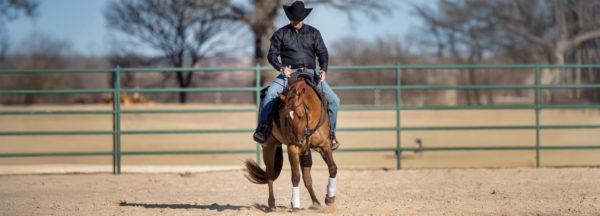
Too many people, in my opinion, underestimate how much backing a horse up improves the horse’s overall performance. If you want to know how well-trained a horse is, watch how he backs up. Horses can’t lie in the back up. When they’re really soft, they’ll collect, round their bodies and have cadence in their feet as they move backwards. If they’re sorry-broke, stiff and don’t respect the bridle, they’ll throw their heads up in the air, brace their feet and gap their mouths.
I practice backing my horses up under saddle two or three times a week during a training session. One of the exercises I teach my horses is Backing in Circles Under Saddle. Backing your horse in circles is all about getting control of your horse’s body and being able to shape it as needed.
I teach my horses to do this exercise in two parts, and in the last issue of the Journal, I explained how to teach part one of the exercise, which is training your horse to back in circles with his head tipped in the opposite of the direction his hindquarters are moving in. This makes it easier for the horse to understand how to do the exercise.
Once your horse can do part one of the exercise well, it’s important to move on to part two, where you’ll ask him to back up with his head tipped in the same direction his hindquarters are moving in. This is much harder for a horse to do and really works on getting him soft and supple throughout his entire body.
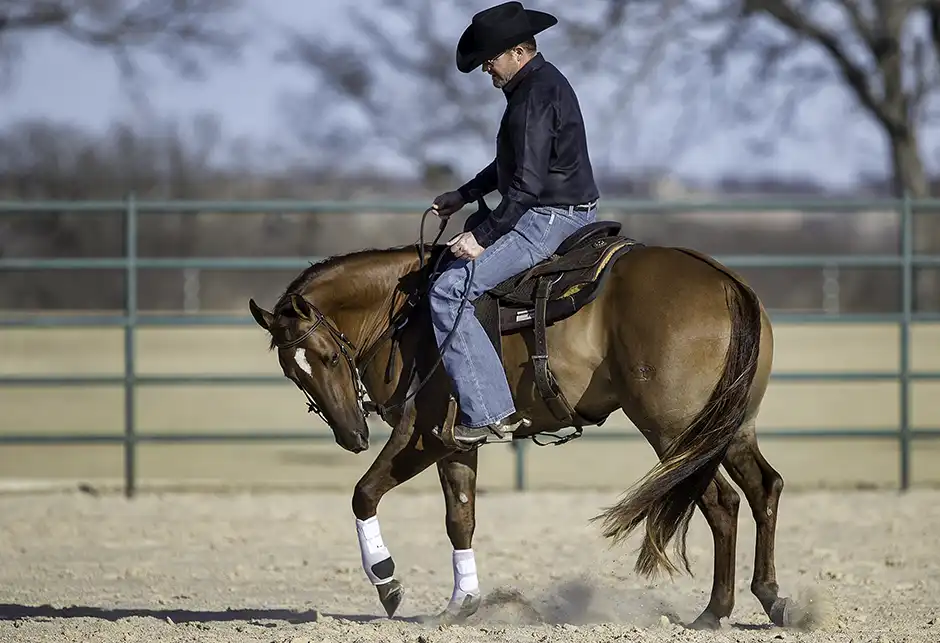
Bridle the horse up with two hands on the reins and ask him to back up. When he’s backing with energy in his feet and is soft in your hands, direct him in a circle. To do this, slightly tip his nose into the circle with your inside rein. You should just be able to see the horse’s eye.
Here, I’m backing Goose in a counterclockwise circle, so I use my right (inside) rein to tip his nose slightly into the circle. I keep my left (outside) rein in a neutral position.
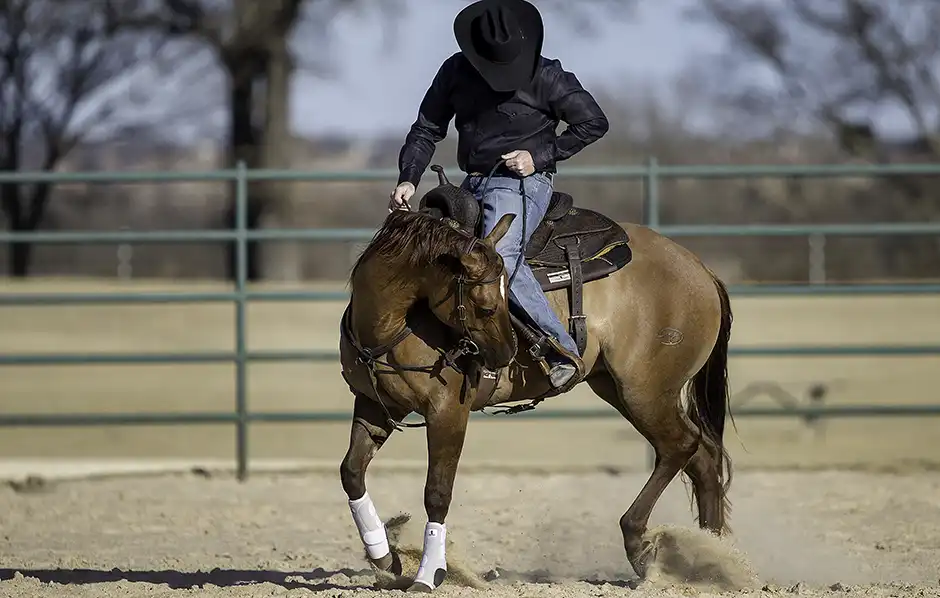
At the same time, place your inside leg up near the girth and keep your outside leg back near the horse’s flank and gently press. Your inside leg pushes the horse’s shoulders around in the circle, and your outside leg pushes his hindquarters into the circle. Think of it like this: Your hands ask the horse to back up and your legs create energy in his feet.
Because I’m backing Goose in a counterclockwise circle, I use my right (inside) leg to apply pressure up by his girth to push his shoulders around in the circle. With my left (outside) leg, I guide his hindquarters around.
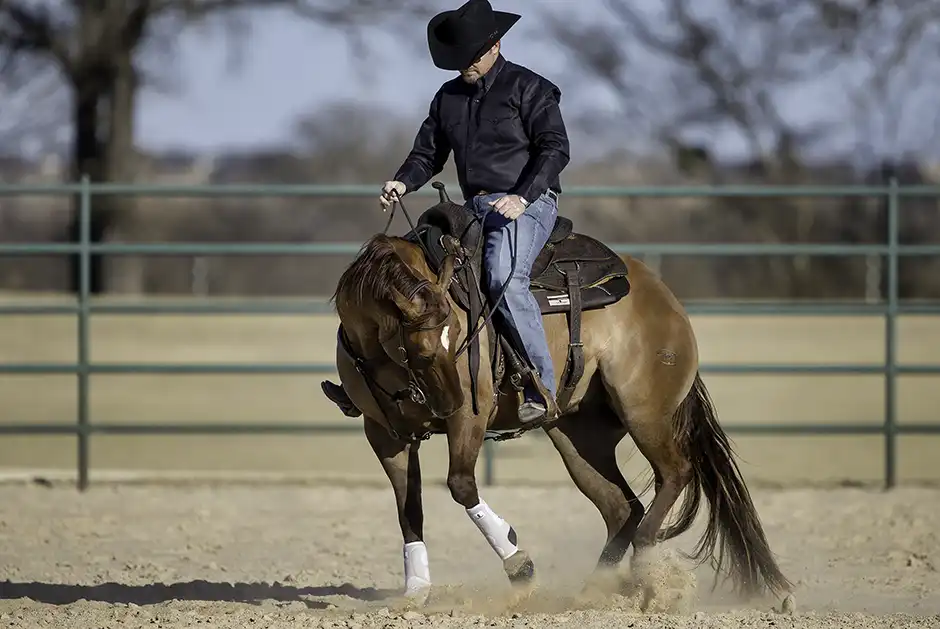
Initially, look for the horse to just take a couple of steps backwards with his nose tipped in the direction his hindquarters are traveling in. As soon as he takes a couple of steps backwards while remaining soft in the bridle, release the pressure and let him come to a stop. Establish a starting point and build from there. It’s much harder for a horse to back in a circle with his head tipped in the same direction his hindquarters are moving in because naturally a horse’s hindquarters move in the opposite of the direction his head is tipped in.
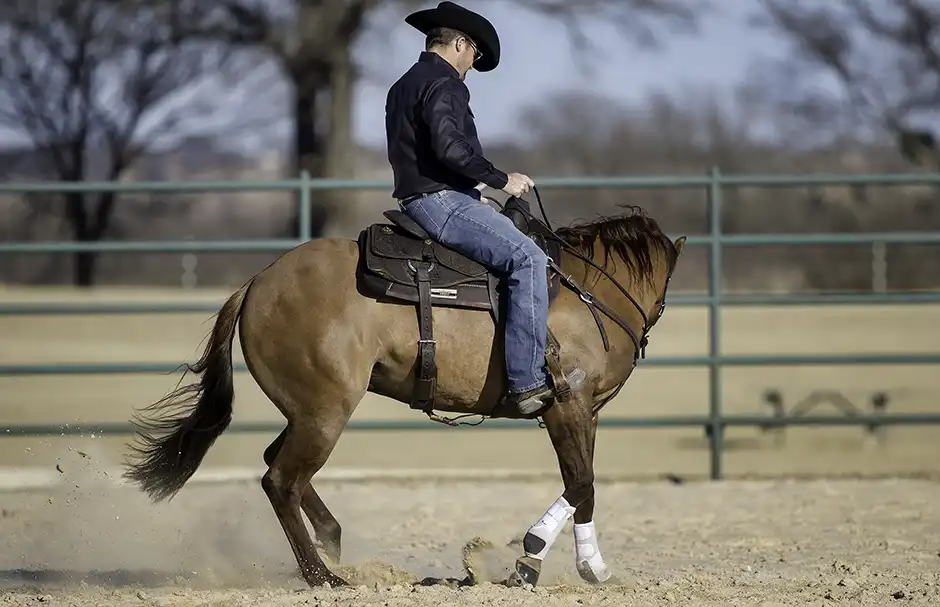
Continue to build on the number of steps the horse can take until he can back a complete circle. When the horse can back in one direction well, teach the exercise to the other side of his body. Start at the beginning and look for the horse to take a couple of steps, and when he does, reward him.
It may take several training sessions before the horse can back a complete circle in both directions. That’s OK, just chip away at it.
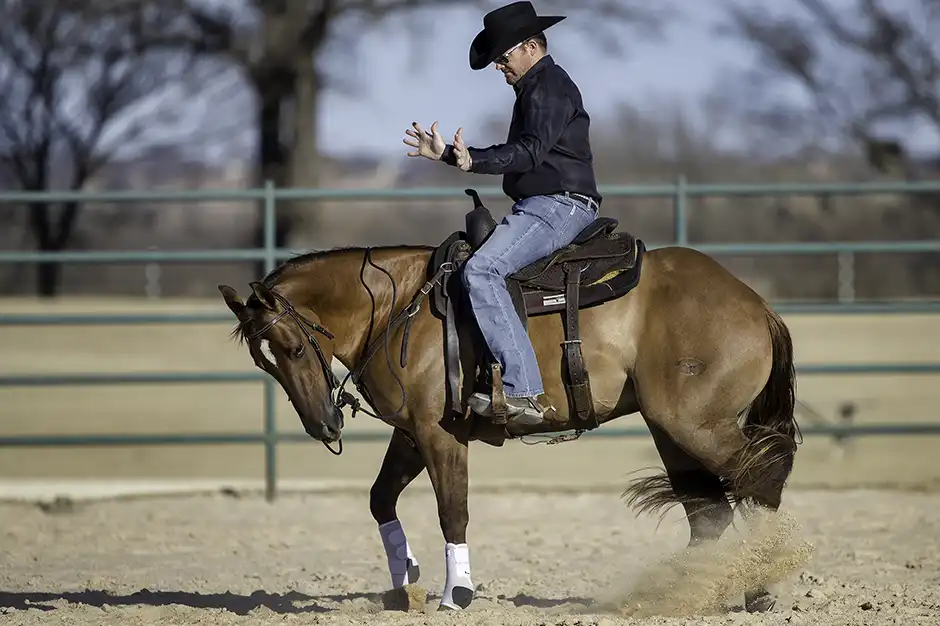
When the horse can back a circle in both directions while staying soft in the bridle and maintaining energy in his feet, then change things up. Ask him to back in a figure-8 pattern. Back the horse in a complete circle, and then, when he’s finished the circle, change your hand and leg position to back him up going in the opposite direction.

For example, if you were backing the horse up in a circle going counterclockwise, like I was doing with Goose, when you hit the middle of the figure-8 pattern and were ready to ask the horse to change the direction he was backing in, you’d use your left rein to tip his nose in the opposite direction, apply pressure with your left leg up by girth to direct his shoulders and press with your right leg back near his hindquarters to move his hind end around the circle.

Backing a figure-8 pattern gets the horse softer and improves the control you have of his body because you’re asking him to change the shape of his body while his feet are moving. You’ll know your horse is really soft when he doesn’t lift his head and neck above his withers when he changes shape. You’re looking for the horse to back the pattern with a smooth, even cadence to his feet.
Success Tip
The secret to getting your horse to back up well is to quit when there is energy in his feet. If, when you’re teaching your horse this exercise, you think he is going to stop backing up on his third step, stop him when he takes his second step. Don’t keep forcing him to back up because he’ll only get worse and getting him to back will turn into a fight.
This isn’t an exercise you should work on for half an hour at a time. Chip away at it a little bit every day so that the horse doesn’t become frustrated and shut down on you. Remember, it’s physically demanding for the horse to back up a lot.
